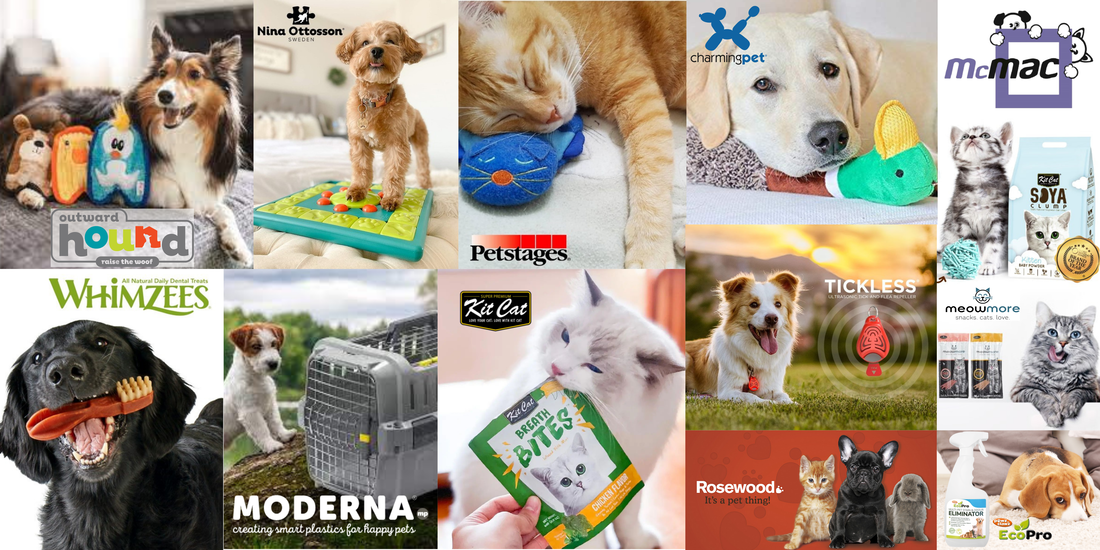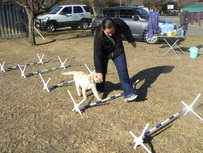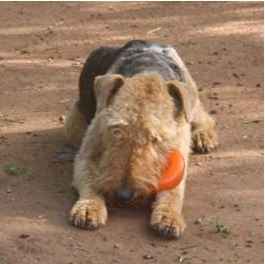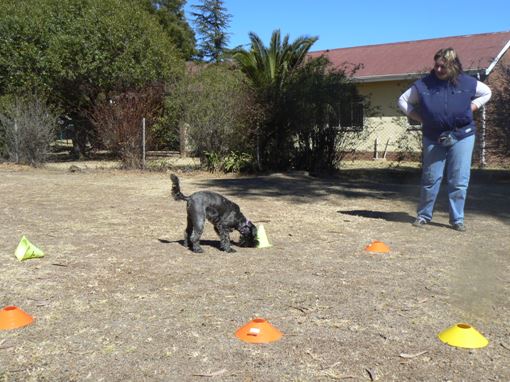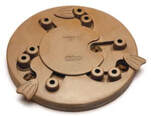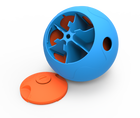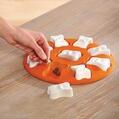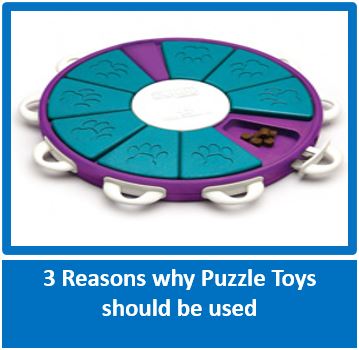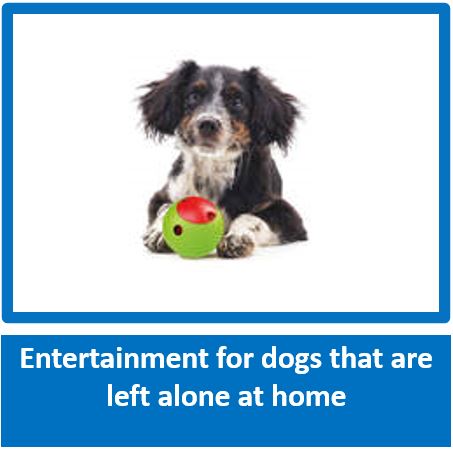Active Mind = Happy Dog - TALES FROM A DOG BEHAVIOURIST:
Guest Article - Katherine Brown BA HONS PSYCH (UJ) : Dog Behaviourist : [email protected] - Copyright Katherine Brown
We, as dog lovers, do our best to cater to our dog’s needs. We make sure they have a warm place to sleep, good quality food, regular attention, health care when they need it, and so on. There’s one area that often gets neglected though, and that is a dog’s mental needs. A lot of us have been raised to believe that dogs are not the brightest of creatures, and certainly not as intelligent as us. I disagree. Dogs are highly intelligent, and I don’t just mean that they can be trained to do astounding tricks. Dogs have an intelligence that is similar to ours in many ways, otherwise we wouldn’t be able to communicate with them so effectively, but they are also intelligent in ways that we don’t necessarily recognise. Canine intelligence is an entire topic on its own, but for now I want to focus on the needs that dogs experience because of their intelligence.
Some breeds of dog have more obviously active minds than others. A Jack Russell is constantly on the move, not only because they have high physical energy but also because they have high mental energy. I often hear Bulldog owners describe their dogs as ‘dim’ or outright ‘stupid’. Perhaps they are not intelligent in a way that we recognise, but that certainly does not mean that their minds are dormant.
Keeping your dog’s mind active is just as important as keeping their bodies active. Daily walks are fantastic, and I wish all dog owners would make the effort to take their dogs out every day. Walks combine the physical with the mental – not only is your dog walking, but they’re also sniffing, seeing and hearing different things. If you do walk your dogs every day, change the routes that you use to keep your dog interested. I see a lot of dogs that are walked the same way every time, and very simply, they look bored and depressed. If you always walk at the same park, make a plan to try a different park once a week. If you always walk your dog around your neighbourhood, make a plan to try a park. This might sound crazy, but I occasionally drive to a different suburb and walk my dogs around the streets, just to make a change from walking around my suburb. Mixing up where you walk your dog will ensure that not just your dog’s body is exercised.
Most of us have toys for our dogs. I’ll admit, I have a small cupboard full of them and I get new ones fairly often. Here’s the catch: my dogs are not allowed to play with these whenever they want. This is partly because some toys are ‘supervision only’ – basically, they’re too expensive to allow my dogs to destroy them in one sitting! The main reason I do this though, is to keep my dogs interested in their toys. If their toys are always out for them to play with, they quickly become bored of them. It’s best to have a variety of toys and to keep them secured away from your dog. Take out a couple of toys each day, and the next day, take out another couple of different toys (put the previous day’s toys away). Rotating toys is an easy way of keeping your dog busy and also stimulating their mind. Every so often, buy a new toy, just to keep their interest piqued. And don’t forget, just because a dog is an adult does not mean that they won’t appreciate toys and having a game with you.
Most dogs are fed, hopefully, a good quality dog food and, hopefully, this happens twice a day. Being a food lover, I can’t imagine anything worse than eating the same food day in and day out. I personally think it’s absolutely fine to give dogs leftovers, like pasta, rice, vegetables and meat, and I do so regularly. ‘Human food’ should be added as part of your dog’s meal, in their bowl, so that they don’t connect the food with you and become a beggar. It’s also a good idea to give your dog slightly less of their dog food when you add leftovers, to prevent weight gain. I also like to randomly add canned dog food or treats to their normal food. Some animal care professionals do not believe that dogs should ever have human food. However, some think that it is fine. It really depends mostly on your individual dog: some dogs have sensitive stomachs and so should have strict diets, elderly dogs and puppies may react badly to different foods. There are of course, some foods that dogs should never have. Chocolate, raisins, cooked bones – ask your vet about foods that dogs cannot eat. Another way of enriching your dog’s ‘food life’ is to give them extras, like marrow bones. One thing I really like is stuffing hoofs with canned dog food for my dog’s to lick out (if you freeze the hoof, it takes them ages to lick out!). Again, there are opinions that bones and hoofs should never be given to dogs, and if you are concerned about this, don’t do it or supervise your dog when he has a bone or hoof. Dog bowls can be very boring! Try scattering your dog’s food around the garden for them to find, obviously avoiding areas where they may pee or poo. Dogs enjoy scavenging and looking for food.
Moving things around in your house is another way of creating an interesting environment for your dog. A chair in a different place, a carpet moved somewhere else – anything different will create interest (by the way, cats love this too). However, if your dog (or cat) is old or blind, you must keep things the same so that your dog knows where they are in your house. Moving your dog’s kennel or bed slightly, just for a day so that it’s not a huge change, is another easy change to make. Something I do with my dogs, about once every month or two, is feed them in a completely different place. They get hugely excited when they see me carrying their bowls into the garden. I don’t do this often because dogs do need routines, but once in a while is great stimulation.
Some of the fantastic toys we love below that provide mental stimulation. Have a look at the link for further details and more options - enjoy!
Some breeds of dog have more obviously active minds than others. A Jack Russell is constantly on the move, not only because they have high physical energy but also because they have high mental energy. I often hear Bulldog owners describe their dogs as ‘dim’ or outright ‘stupid’. Perhaps they are not intelligent in a way that we recognise, but that certainly does not mean that their minds are dormant.
Keeping your dog’s mind active is just as important as keeping their bodies active. Daily walks are fantastic, and I wish all dog owners would make the effort to take their dogs out every day. Walks combine the physical with the mental – not only is your dog walking, but they’re also sniffing, seeing and hearing different things. If you do walk your dogs every day, change the routes that you use to keep your dog interested. I see a lot of dogs that are walked the same way every time, and very simply, they look bored and depressed. If you always walk at the same park, make a plan to try a different park once a week. If you always walk your dog around your neighbourhood, make a plan to try a park. This might sound crazy, but I occasionally drive to a different suburb and walk my dogs around the streets, just to make a change from walking around my suburb. Mixing up where you walk your dog will ensure that not just your dog’s body is exercised.
Most of us have toys for our dogs. I’ll admit, I have a small cupboard full of them and I get new ones fairly often. Here’s the catch: my dogs are not allowed to play with these whenever they want. This is partly because some toys are ‘supervision only’ – basically, they’re too expensive to allow my dogs to destroy them in one sitting! The main reason I do this though, is to keep my dogs interested in their toys. If their toys are always out for them to play with, they quickly become bored of them. It’s best to have a variety of toys and to keep them secured away from your dog. Take out a couple of toys each day, and the next day, take out another couple of different toys (put the previous day’s toys away). Rotating toys is an easy way of keeping your dog busy and also stimulating their mind. Every so often, buy a new toy, just to keep their interest piqued. And don’t forget, just because a dog is an adult does not mean that they won’t appreciate toys and having a game with you.
Most dogs are fed, hopefully, a good quality dog food and, hopefully, this happens twice a day. Being a food lover, I can’t imagine anything worse than eating the same food day in and day out. I personally think it’s absolutely fine to give dogs leftovers, like pasta, rice, vegetables and meat, and I do so regularly. ‘Human food’ should be added as part of your dog’s meal, in their bowl, so that they don’t connect the food with you and become a beggar. It’s also a good idea to give your dog slightly less of their dog food when you add leftovers, to prevent weight gain. I also like to randomly add canned dog food or treats to their normal food. Some animal care professionals do not believe that dogs should ever have human food. However, some think that it is fine. It really depends mostly on your individual dog: some dogs have sensitive stomachs and so should have strict diets, elderly dogs and puppies may react badly to different foods. There are of course, some foods that dogs should never have. Chocolate, raisins, cooked bones – ask your vet about foods that dogs cannot eat. Another way of enriching your dog’s ‘food life’ is to give them extras, like marrow bones. One thing I really like is stuffing hoofs with canned dog food for my dog’s to lick out (if you freeze the hoof, it takes them ages to lick out!). Again, there are opinions that bones and hoofs should never be given to dogs, and if you are concerned about this, don’t do it or supervise your dog when he has a bone or hoof. Dog bowls can be very boring! Try scattering your dog’s food around the garden for them to find, obviously avoiding areas where they may pee or poo. Dogs enjoy scavenging and looking for food.
Moving things around in your house is another way of creating an interesting environment for your dog. A chair in a different place, a carpet moved somewhere else – anything different will create interest (by the way, cats love this too). However, if your dog (or cat) is old or blind, you must keep things the same so that your dog knows where they are in your house. Moving your dog’s kennel or bed slightly, just for a day so that it’s not a huge change, is another easy change to make. Something I do with my dogs, about once every month or two, is feed them in a completely different place. They get hugely excited when they see me carrying their bowls into the garden. I don’t do this often because dogs do need routines, but once in a while is great stimulation.
Some of the fantastic toys we love below that provide mental stimulation. Have a look at the link for further details and more options - enjoy!
Dogs love using their noses, so use this trait to create activities for them. Hide treats around the garden for them to find, make a trail of chicken stock that leads to a treat, put found feathers in the garden, or fur from a strange cat or dog (please don’t go around ripping fur out of random animals – ask a friend for brushings from their animal!). Activities like these will excite your dog’s nose and mind and give them plenty to think about. Personally, I enjoy taking a handful of pet’s biltong broken up into tiny pieces and tossing it into the garden – my dogs love it!
If you don’t take your dog to training classes, consider doing so. Not only do dogs enjoy learning, but they will also be enriched by the sight and smell of different dogs and people. If you cannot take your dog to training for some reason, have a training session at home. Set aside a few minutes every few days and practice whatever commands your dog knows, or if you’re good at training, teach them new commands. Try training your dog in various areas in your home, or using different treats. There are websites and videos on the internet that explain how to train your dog to do various things, from the basic to the complex. Always remember – training should be a positive learning and bonding experience for you and your dog. Do not allow frustration into the training scenario; if you’re getting frustrated, ask your dog to do something that you’re sure he knows and reward him so that you end the session off on a good note.
There are many ways to stimulate your dog’s mind, and the methods I’ve mentioned are simply the ones that I use. There are many books and websites with ideas for stimulating your dog’s mind. It’s important to keep in mind that some enrichment ideas may be harmful to your dog, or may require supervision. Always consider any ideas carefully before trying them, and if your dog reacts negatively, stop it immediately. If you’re unsure about using an idea, speak to your vet or behaviourist. Your dog’s welfare comes first!
I cannot emphasize enough the importance of catering to your dog’s mental needs. Most of the cases I see involve a dog that is bored, stressed and depressed because their mind is not being stimulated. This is extremely sad to see, but fortunately it is quite easy to remedy. By enriching your dog’s life, not only will you have a happier dog, but you’ll also have a dog that is less likely to try and find ways to keep occupied, which usually means digging or destruction. Enjoy entertaining your dog – I assure you it will entertain you too.
If you don’t take your dog to training classes, consider doing so. Not only do dogs enjoy learning, but they will also be enriched by the sight and smell of different dogs and people. If you cannot take your dog to training for some reason, have a training session at home. Set aside a few minutes every few days and practice whatever commands your dog knows, or if you’re good at training, teach them new commands. Try training your dog in various areas in your home, or using different treats. There are websites and videos on the internet that explain how to train your dog to do various things, from the basic to the complex. Always remember – training should be a positive learning and bonding experience for you and your dog. Do not allow frustration into the training scenario; if you’re getting frustrated, ask your dog to do something that you’re sure he knows and reward him so that you end the session off on a good note.
There are many ways to stimulate your dog’s mind, and the methods I’ve mentioned are simply the ones that I use. There are many books and websites with ideas for stimulating your dog’s mind. It’s important to keep in mind that some enrichment ideas may be harmful to your dog, or may require supervision. Always consider any ideas carefully before trying them, and if your dog reacts negatively, stop it immediately. If you’re unsure about using an idea, speak to your vet or behaviourist. Your dog’s welfare comes first!
I cannot emphasize enough the importance of catering to your dog’s mental needs. Most of the cases I see involve a dog that is bored, stressed and depressed because their mind is not being stimulated. This is extremely sad to see, but fortunately it is quite easy to remedy. By enriching your dog’s life, not only will you have a happier dog, but you’ll also have a dog that is less likely to try and find ways to keep occupied, which usually means digging or destruction. Enjoy entertaining your dog – I assure you it will entertain you too.

